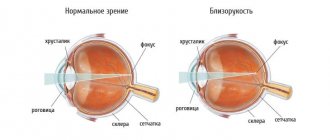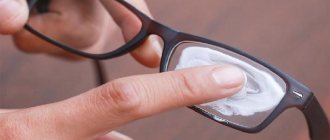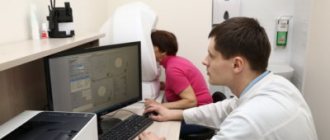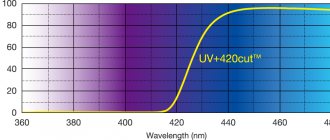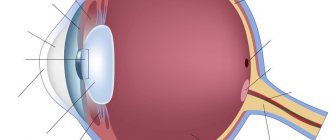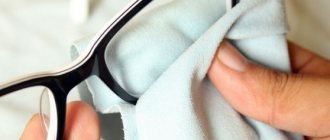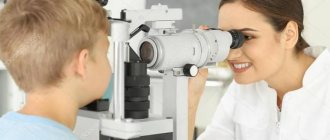With the passage of time and aging, it becomes difficult for elderly people to maintain their health at a high level. Life inevitably leads to differences in health over the years. Not everyone takes care of their health from a young age. It is only when health begins to deteriorate that many people realize its importance in their lives. The eyes react more than other organs to changes that occur with aging. In our youth, the entire visual world around us looks clear, however, when we reach the age of over 40 years, the visual picture becomes faded and blurry. So, what is different about the vision of old people? Are there options on how to maintain good vision in old age? The Eden boarding house in Moscow provides comprehensive care for visually impaired people and helps restore their eyes.
Causes of decreased vision in the elderly
The processes that occur during natural aging include wear and tear of tissues and organs, and the eyes are no exception in this regard. The organs responsible for vision are subject to microchanges. Eg:
The pupils decrease in size.
Over time, the strength of the muscles that are responsible for changes in pupil size decreases. The result of this is constriction of the pupils and loss of timely response to the amount of incoming light. A characteristic feature of such changes is the need for increased lighting for reading texts (for comfortable reading, a 20-year-old person requires three times less intense lighting than a 60-year-old). An elderly person will experience discomfort when the lighting changes dramatically; for example, when leaving a dark room into sunlight, he will feel some blindness due to the inability of the pupils to react in time to intense light. In order to minimize such unpleasant sensations, glasses with anti-reflective coating are used.
Lack or excess of moisture in the eyes.
Elderly people often complain of disturbances in tear secretion (excessive or insufficient tearing). Such consequences can arise for three reasons, sometimes occurring simultaneously. The first reason is that with age, the lacrimal gland stops producing a sufficient amount of fluid, which is why tears quickly evaporate and the eyes of an elderly person dry out. Also, such drying of the eyes can be caused by harmful environmental influences: smoke, heat, wind, toxic air pollution. In this case, the body reacts by launching a protective mechanism, which manifests itself in the form of excessive tear production, which leads to waterlogging of the eyes and is popularly called the “wet eyes effect.” The second reason for such consequences is that the wear and tear of the body progresses in older people. This leads to disturbances in the motor functions of the eyelids; the eyelids become unable to control the level of tears in the eyes. As a result, the elderly person ends up with tears flowing from the eyes that would normally be drained into the sinuses through small tear ducts located closer to the bridge of the nose inside the eyelid. The third reason is that the tear ducts may become blocked. This leads to excessive moisture in the eyes. In such circumstances, when the lacrimal drainage channels are blocked, this problem can be easily solved by regular rinsing.
Dry eyes lead to painful sensations, manifested as burning or cutting tingling sensations. If an elderly person complains of excessive dryness in the eyes (quite often this occurs during the heating season), you can use a humidifier to eliminate these unpleasant sensations.
It happens that an elderly person complains of excessive moisture in the eyes, but a thorough medical examination reveals that this is not the case. This feeling of excessive tearing can occur due to the progression of diseases in the body, such as macular degeneration, cataracts and other diseases that lead to “wet eyes”.
Narrowing of visual fields.
The ability to peripheral vision decreases markedly with natural aging, this decrease occurs by 1-3 degrees for every 10 years of life. As a result, when an elderly person reaches the age of 70, the rate of such decline is quite impressive. People who drive at an advanced age should take this factor into account, as it greatly increases the likelihood of an accident.
Reduced perception of colors and contrasts.
In older people, the number of cells that form the retina noticeably decreases with age. These types of cells are responsible for color perception. A decrease in the number of such cells reduces the ability to correctly perceive colors and contrasts, while the ability to distinguish tones and shades is reduced. This problem especially affects older people whose activities are associated with acute perception of colors and contrasts, for example, photographers, designers and artists.
Vitreous detachment.
Manifestations in the form of flashes of bright light, microlightning and blurred vision may indicate that the vitreous body may be exfoliating. Such symptoms usually do not cause any time or difficulty for an elderly person. However, this can lead to irreversible consequences; if the vitreous detachment progresses, it can lead to retinal detachment.
Macular degradation.
The small part of the retina that is responsible for sensing light is called the macula, and it is also responsible for perceiving differences in the smallest elements. In order to perceive the picture most clearly, older people unconsciously position their eyes so that the light reflected from the desired object falls on the yellow spot, and in order to see small details as clearly as possible, the light from them must fall on the hollow of the yellow spot. The retina is the nervous tissue of the brain, so its sensitivity to disturbances in blood supply is maximum.
If the sufficiency of blood supply to the macula decreases, then the ability to distinguish images is gradually lost, which greatly impairs the vision of elderly people. Macular degeneration is often the leading cause of vision loss in older adults. Deterioration in vision in older people can be caused when any blood vessels in the tissues of the visual organs rupture.
To solve such problems, laser eye surgery methods are successfully used. But for the effective use of this therapy technology, it is necessary that the damaged vessel be as close as possible to the macula.
Modern medicine does not yet have practical tools for restoring vision if vision problems in an elderly person are caused by insufficient blood supply. However, there are some diets that can have a positive effect on restoring blood flow and vision in general, such as eating foods that contain large amounts of antioxidant vitamins and zinc.
Vision problems in an elderly person caused by the use of medications.
It is not always the case that elderly people can enjoy their old age without the use of pharmacological drugs. When taking medications, it is necessary to take into account all their possible negative side effects. A sufficient number of modern medications affect the vision of old people, affecting the acuity of visual perception, changing color perception, causing blurriness and double vision, complicating vision at night, etc.
A medical professional must take the most responsible approach to making a diagnosis, carefully studying all the elderly person’s complaints about vision. An elderly person needs the most detailed instructions and explanations in the use of each drug so that the pensioner can treat his illness with a minimum number of side effects.
Proper nutrition
Nutrition should provide a sufficient supply of vitamins necessary for the proper functioning of the visual organs. These include:
- vitamin E enhances the activity of antioxidants, improves blood circulation in the eye area (nuts, spinach, vegetable oil);
- vitamin A (retinol), which increases the body's resistance to infections, affects visual acuity, regulates processes in the mucous membranes (eggs, milk, liver of sea fish);
- vitamin C (ascorbic acid), which strengthens blood vessels and has a general strengthening effect on the entire body (kiwi, red currants, cabbage, oranges, lemons, spinach, green peas).
- B vitamins ensure optimal functioning of the nervous and immune systems (yeast, cottage cheese, cheese, legumes);
In addition, to maintain eye health, we need various microelements, the most important of which are zinc, selenium, and copper. Currently, ophthalmologists have in their arsenal complex preparations containing all the necessary vitamins, carotenoids, bioflavoids, microelements, differing only in the content of the components and their dosage (Vision Forte, Okuwait Lutein Forte, etc.).
Preparations made from plant materials (blueberries, black currants, red grape seeds) are widely used: “Strix”, “Anthocyan Forte”, “Myrtilene Forte”, “Focus”, “Blueberry Forte”, “Oculist”, etc. They are taken in courses (autumn-spring) from 2 to 3 months, but as with all medicines, for these drugs there is an individual intolerance to the auxiliary components, and there is a risk of developing allergic reactions. Reception only under the supervision of a doctor.
Avoid excessive consumption of substances that negatively affect visual function - coffee, strong tea, refined sugar, tobacco and alcohol.
Skin changes leading to visual impairment in older people.
The aging process of the skin in older people leads to the so-called sagging eyelids. This may appear as eyelashes shifting inward or outward. Shifting the eyelashes towards the eye can irritate the cornea. But this may not lead to a strong feeling of discomfort, since the sensitivity of the cornea decreases with aging. Changes in the functioning of the eyelids may be the reason that their permanent position will be lowered relative to the normal one (senile ptosis), however, this may only be a cosmetic defect that does not affect vision as a whole. In circumstances where such a lowered state is a problem for vision, one can seek surgical intervention, or raise their position using thin wires attached to glasses.
In cases where such symptoms appear, it is necessary to consult a qualified doctor in order to most accurately determine the causes of vision problems in an elderly person. Below in this article is a list of the most common diseases affecting vision in older people.
Causes of age-related vision loss
- changes in the tissues of the cornea and lens caused by the aging process of the body (thickening, loss of elasticity, formation of opacities);
- age-related dystrophic changes in the ciliary muscle, which is responsible for changes in the curvature of the lens;
- vascular pathologies of the organs of vision;
- general chronic diseases, for example, diabetes, etc.;
- consequences of occupational overload of the eye muscles;
- hereditary predisposition to eye diseases.
Diseases that cause vision problems in older people.
"Presbyopia".
This disease consists of pathologies that progress by the age of 40. Such visual impairment in an elderly person occurs due to insufficient accommodation and is noticeable when working with objects at close range. The causes of disturbances in the balance of accommodation are the dehydrated inner part of the eyes, an increased amount of albuminoid, leading to compaction of the capsule and nucleus of the lens. Leads to an increased yellowish tint. The functions of the ciliary muscles deteriorate over time, this may be the cause of dystrophic manifestations in these muscles even before the age of 40. Surgery is used to treat this disease. There are several methods for such operations. The laser thermokeratoplasty technique involves the use of radio waves that change the curvature of the cornea in one eye, thereby creating the effect of monovision. Monovision is also formed when using the LASIK method, however, it leads to a permanent effect.
Presbyopia can be corrected using an innovative technique called “multifunctional LASIK”, but this method is still in the clinical testing stage. This newest method of treating presbyopia uses an excimer laser, which forms optical zones of different intensity on the inner parts of the cornea of the eye for visual perception of different distances.
Farsightedness that occurs with aging can be corrected by another radical method - replacing the lens. But such an operation involves some risks. In circumstances where cataracts occur simultaneously and presbyopia progresses, such surgical intervention will effectively solve the problem of vision correction. In modern medicine, artificial lenses (IOLs) are used, thanks to which it is possible to successfully combat the problems of presbyopia and various types of farsightedness, myopia, and astigmatism.
"Cataract".
Cloudiness of the lens can lead to cataracts. Many elderly people suffer from this disease. This disease in older people is called “age-related” or “senile”. There are several types of age-related cataracts: cortical or mixed (the most common) and nuclear. To combat cataracts, medications are used, which can only be prescribed by a qualified doctor. Surgical methods can also be used to treat this disease: extraction of cataracts, implantation of an intraocular lens, replacement of the lens with an artificial one.
If cataracts are identified in a timely manner, it is possible to stop its development using specialized vitamins and other medications that will eliminate the need for surgery.
To diagnose cataracts yourself, you will need diaphragm glasses. If it is not possible to purchase such glasses, then you can make a special diaphragm yourself. Taking a square 3x3 cm in size from black thick paper, you need to make a hole in the center with a needle.
Place the resulting diaphragm model as close to the eye as possible and concentrate your gaze on the white paper. If the sheet has a pure white color throughout its entire size, this means that the lens is not cloudy and is transparent. If the picture of the leaf has dark spots and deviations in white color, it means that the lens is cloudier. By using this method to monitor cataracts, timely corrections in treatment can be made. In the early stages of the disease, a number of exercises for the muscles in and around the eye, as well as medications, can help.
"Glaucoma".
Glaucoma involves increased intraocular pressure. This disease leads to an inevitable decrease in the sensitive nerve visual tissue.
Symptoms of primary glaucoma appear in citizens over 40 years of age. Such vision problems in an elderly person can be treated in the early stages of the disease. It is necessary to follow the work schedule, follow the doctor’s instructions in the use of antiglaucoma medications, and undergo regular examinations.
Treatment of this disease requires an integrated approach. The degree of glaucoma is taken into account when prescribing antihypertensive and other pharmacological drugs. A method of surgical intervention is also used - iridectomy, this allows you to equalize the level of pressure of fluids in front of and behind the iris of the eye. Post-operative care will speed up the recovery process.
Is it worth resorting to laser vision correction in older people?
Ophthalmologists often say that the use of the excimer laser method of vision correction gives good results between the ages of 12 and 45 years.
There are no contraindications to laser vision correction for people under 18 years of age, because at this stage of growing up the body continues to develop (and the eyes are no exception). There are cases when, during the development of the organism, changes occur in visual refraction.
People over 45 years of age (including people who have always had good vision) notice symptoms of presbyopia (senile farsightedness) - negative changes occur when focusing on close objects. An elderly person with presbyopia finds it difficult to focus on small details, and the process of reading texts becomes much more difficult. Such consequences are caused by changes in the composition of the lens; it becomes denser and significantly loses the ability to change its shape. Also, with aging, the group of muscles that hold the lens weakens. In the brain, the occipital regions are responsible for visual perception. These zones send impulses to the muscles of the eye to change the shape of the lens in order to focus light from objects in the immediate vicinity onto the retina of the eye; they alone can no longer do this efficiently. These visual impairments in older people inevitably occur as part of the natural aging process, which cannot be stopped.
The method of laser vision correction in an elderly person cannot relieve him of the symptoms of presbyopia. Over time, regardless of whether you have undergone laser vision correction or not, manifestations of farsightedness will occur in old age.
There is an opinion that in a person who previously suffered from myopia, upon reaching old age and acquiring senile farsightedness, vision is stabilized by such compensation. But this is a myth. When aging, past vision problems will contribute to the fact that a pensioner will need two pairs of glasses: for everyday wear on the streets and for reading. If laser correction of myopia was carried out on time, then in old age there will be one less problem.
Modern nursing homes and medicine (and ophthalmology inclusive) allow exceptions for elderly patients. Doctors sometimes recommend undergoing laser vision correction both before 18 and after 45 years. But such a recommendation can only be given by a qualified ophthalmologist, after a detailed examination of the organs responsible for visual perception.
How and why to take eye drops
Eye drops are presented in today's medicine in a very diverse manner, having both vitamin and therapeutic purposes. There is a category of drops that relieve fatigue, redness, swelling or dryness. Before you start taking drops, consult with your doctor to choose the drops that are ideal for you. Nowadays, every drug has instructions, and you can get advice not only from a doctor, but also from a pharmacist working in a pharmacy.
Rules for putting eye drops into your eyes.
Dropping medications into the eye seems like a simple procedure. But it is not so. To prevent drops dripped into the eyes from leaking out and to achieve the desired effect, you need to use some techniques. Such nuances will lead to high-quality retention of drugs in the eyes and help avoid some side effects.
If instilled poorly, eye drops can flow into the lacrimal canaliculi, which are located in the corner of the eye, and from there into the sinus area. Being in this section of the sinuses, drops can be absorbed into the mucous membrane, from there entering the blood and spreading throughout the body. There is a list of eye drops (especially those used to treat glaucoma and high eye pressure), which, if they enter the circulatory system, can cause unpleasant effects:
- Changes in blood pressure.
- Deviations in heart rhythm.
- Feeling depressed or nervous.
- Asthma.
Clinical manifestations
Signs of ophthalmological disorders depend primarily on the diagnosis. The most acute are infectious diseases of the eyes and inflammatory processes associated with the influence of traumatic factors. The patient experiences severe pain, swelling and redness of the mucous membrane appears, and pus may be released during infection.
Main symptoms of eye diseases:
- blurred vision;
- swelling of the mucous membrane;
- redness of the sclera;
- purulent discharge;
- pain, sting.
If the symptoms listed above require consultation with a professional. Only a doctor can determine the diagnosis and further treatment measures. Conditions accompanied by infectious complications and rapid loss of vision are especially dangerous. Dangerous pathogens can easily spread through the bloodstream to brain structures, ENT organs and internal organs.
Prevention of vision problems in older people.
Eye gymnastics.
Given the inevitability of changes that occur with age, such processes can be slowed down or stopped altogether. In the modern world, people's vision is subject to serious stress: artificial lighting sources, TV and computer screens, a lot of time spent behind the wheel, a monotonous, tiring urban layout - all these factors have a negative impact on vision. The impact of these facts can be reduced through training. Below in this article are some simple exercises. Such manipulations must be performed once an hour, as a short break between tasks.
- Using a lot of force, squeeze your eyelids and then open your eyes tightly. Repeat this exercise 5-6 times with a 30-second break.
- Keeping your head in one position, direct your gaze to the right, left, up and down. Repeat this 3 times, giving your eyes a rest for 2 minutes.
- Do the above exercise with your eyes closed.
- Apply clockwise and counterclockwise rotation of the eyeballs. Do this 3 times, with 2 minute breaks.
- Apply this exercise with your eyelids closed.
- Close your eyes tightly for a period of 3-5 seconds, then open your eyes for the same period of time. Do this 6-8 times
- Blink rapidly for one minute.
- Bright objects that are located in a well-lit place, at a distance of up to two meters from the worker (decorative items: a painting, calendar, photo or figurine), are excellent for training vision in older people. It is necessary to focus on these objects during eye gymnastics.
- With your arms extended forward, look at your fingertips for 3 to 5 seconds. Do 10-12 times.
- The procedure of “distance contrasts” leads to good results in vision training in older people: stick a small dark piece of tape or plaster on the glass of a window, standing at such a window, find and focus your gaze on a distant object (for example, a mountain top, a television tower, etc. .).
"Eye massage"
Vision problems in older people can be solved by using eye massage. By devoting 10 minutes to massaging the eyeballs every day for one month, you can significantly improve the vision of an elderly person: eye fatigue will decrease, cutting and dry sensations in the eyes will bother you much less often. A gentle massage procedure is highly effective in restoring blood circulation in the eyes and promotes microcirculation processes. Massage procedures help the nervous system to calmly perceive visual images.
A very negative impact on the vision of an elderly person is caused by a large amount of time spent near a TV or computer monitor, constant work with texts or numbers, regular stress that life presents to him, etc. During the massage procedure, eye tension decreases and the tone of the eye muscles decreases. Modern people put excessive strain on their vision, using it thoughtlessly throughout the day. For effective and long-lasting eye work, you need to devote at least a few minutes to them in the evenings.
For the most part, people spend virtually no time on sight-preserving exercises, and as they age, their ability to see well decreases noticeably. By the age of 40, the processes of relaxation and contraction of the eye muscles are greatly impaired, leading to the progression of early myopia, and in old age to farsightedness. Eye massage procedures can significantly slow down such phenomena.
Preventing the development of dry eye syndrome
Many people consider dry eye syndrome (DES) to simply be a source of discomfort, but this is a mistaken approach. If left untreated, dry eye syndrome can lead to complications and even decreased visual acuity. Therefore, it is important to prevent the development of this disease:
- take breaks when reading and working on a computer/mobile devices every 30 minutes, blink more often,
- try to reduce visual load in highly air-conditioned rooms, incl. in cars, airplanes
- in the case of using contact lenses, do not violate the regime of wearing, replacing and processing contact lenses prescribed by the ophthalmologist; If you experience a feeling of dryness and discomfort when wearing contact lenses, you should try to wear them less often and for shorter periods of time during the day, and also use moisturizing drops approved for use together with contact lenses
- spend less time in smoky enclosed spaces (clubs)
- during the hot season, in hot countries, consume enough liquid
- if symptoms of “dry eye” syndrome appear (feelings of dry eye, burning, feeling of “sand”, foreign body in the eye, lacrimation, redness and discomfort of the eyes), use moisturizing drops, so-called tear substitutes
For a correct diagnosis and choice of therapy, you need to contact an ophthalmologist. For more information about some of the moisturizing drops available, you can take the Dry Eyes? Take the test and find out what might be right for you."
Glasses for vision in older people.
Naturally, if the level of vision of an elderly person requires the use of glasses, then, of course, they need to be worn. When outdoors, especially on sunny days, it is best to use dark-tinted glasses (sunglasses) so that contrasting changes in light and shadow do not lead to temporary blinding. However, the use of such glasses with tinted lenses in the dark or in places with poor lighting is not recommended, because such glasses will reduce the already insufficient lighting, which will lead to the accumulation of these two effects on the retina. There is a recommendation, if possible, not to drive personal vehicles in the dark. And in cases where circumstances require such a trip, it is worth using special glasses with an anti-reflective coating (anti-reflective lights), or spraying such a coating on your regular glasses. Such measures will significantly reduce the reflective property of the lenses, and it will be somewhat easier to look at the road.
When talking about reading glasses, it is worth mentioning that there are different points of view on this issue. Many eye doctors insist on wearing reading glasses. Other experts who study this issue say that using such glasses, an elderly person will “train” their eyes to focus incorrectly, so they advise exercise and proper nutrition (however, in extreme cases, surgery is allowed).
Everyone has the right to independently choose which point of view is closer to them and whose recommendations to follow. But all experts unanimously say that it is necessary to take care of your vision throughout your life, and in circumstances where vision has decreased, you should immediately go to a qualified specialist and treat the care of an elderly person with due responsibility.
Hygiene of visual work
If the activity involves eye strain (reading, embroidery, drawing, knitting), it is important that the workplace is sufficiently lit. Moreover, the light source should be located to the left, slightly behind and above the person working. In this case, both insufficient and excessively bright light should be avoided, especially when reading.
It is not recommended to read, work on a computer or use gadgets in dark rooms or rooms where the only source of light is a table lamp - the transition from a lit area to darkness provokes significant eye strain and fatigue. When reading with a table lamp, the latter must have a shade - the light should be directed at the book, and not hit the eyes.
It is harmful for vision to read and perform other types of visual work in moving vehicles - due to vibrations, the text either moves away from the eyes or approaches them, sometimes such vibrations are not even noticeable, but they greatly tire the eyes.
When reading, as well as any visual load, the object should be at a distance of about thirty centimeters from the eyes. A larger or smaller distance provokes tension and subsequent eye fatigue.
